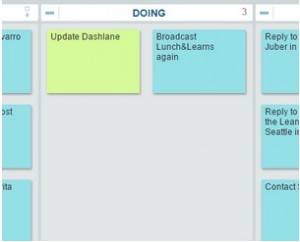What is Personal?
The “Personal” in Personal Kanban can mean many things.Capital P Personal – This is the personal nature of you. Your work, your decisions, your professionalism, your problem solving, your improvement, your life at home, your life period. Since we rarely act fully alone, no Personal Kanban is ever going to only relate to us as individuals and it is rarely only going to be used by us. However, we will want to track those things that are us. We can’t hide them or hide from them. If we do, others will always be giving us work without knowing what we can really do for them.Of Value to People – You create things every day. As a 21st century worker, we are always building things, combining information, processing, and evolving. Tracking only products in our Personal Kanban removes the human element. How much work are you doing? Are you or your teammates overloaded? Can you help each other? Can work be more enjoyable? The human (you) is the creator.(Inter)Personal - Who do you interact with at work? Who are your clients? How do your clients and coworkers know what you are doing and when? How do you know when others are in need of your help? How do they know when you are? Life is relationships. Making it clear who is doing what and how loaded they are helps us all. Most of the discomfort between people comes from misunderstanding what is going on in their lives. The more overloaded we are, the less tolerant we are of inconveniences caused by our teammates. We blame them. They become hurt and blame us. Things spiral downwards. The (Inter)Personal nature of Personal Kanban keeps everyone apprised of what’s going on and why.If your kanban isn’t taking these into account, you just may have an impersonal Kanban … and who wants that? :-)











